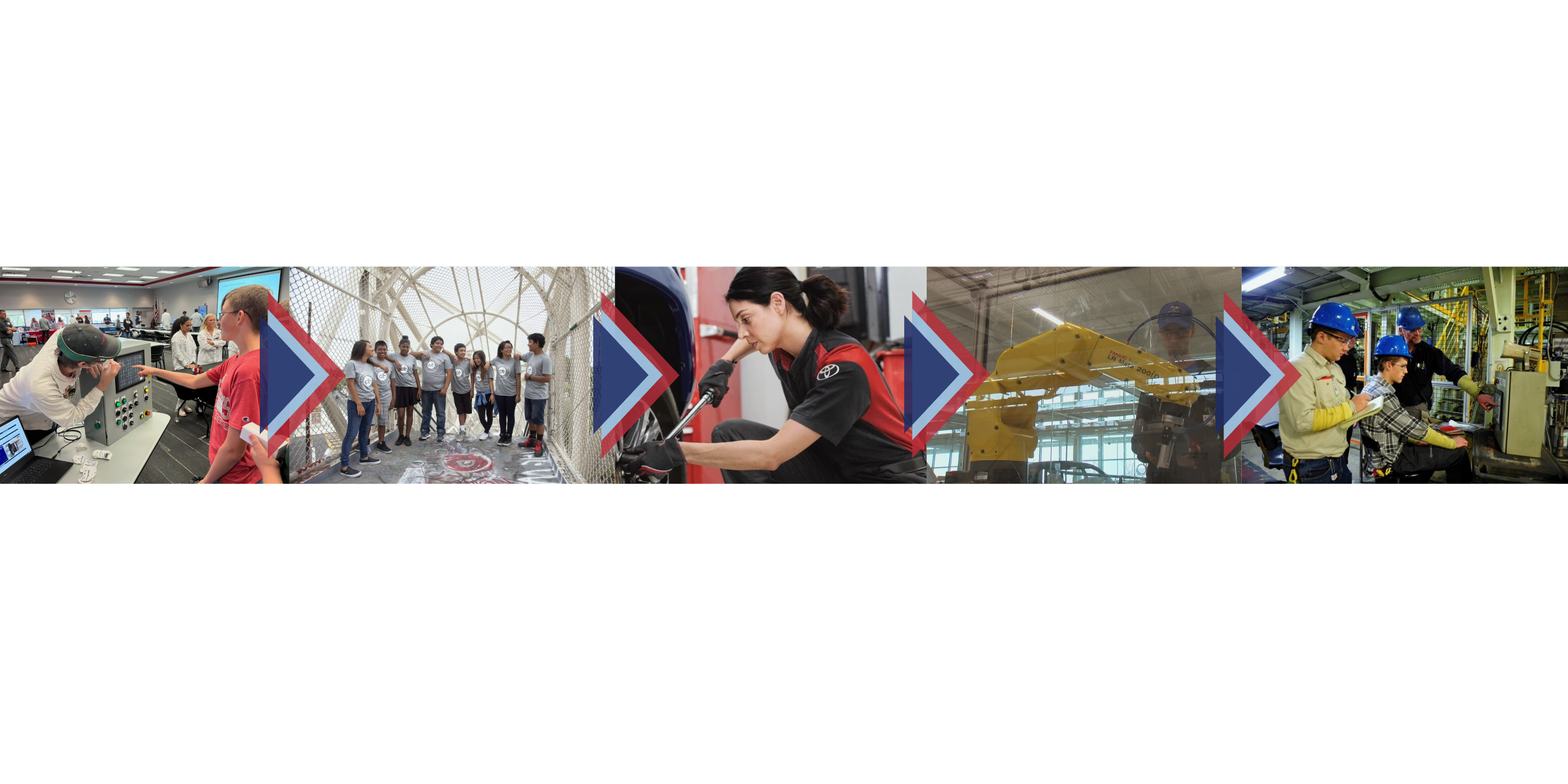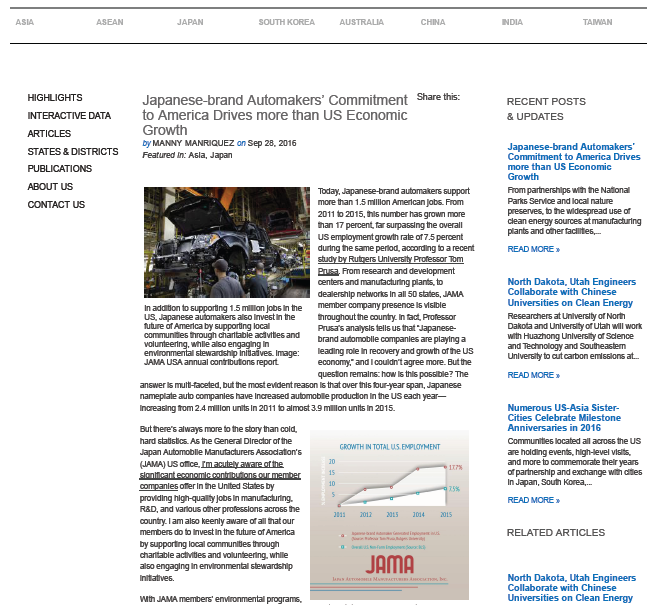By Manny Manriquez
September 28, 2016
Today, Japanese-brand automakers support more than 1.5 million American jobs. From 2011 to 2015, this number has grown more than 17 percent, far surpassing the overall US employment growth rate of 7.5 percent during the same period, according to a recent study by Rutgers University Professor Tom Prusa. From research and development centers and manufacturing plants, to dealership networks in all 50 states, JAMA member company presence is visible throughout the country. In fact, Professor Prusa’s analysis tells us that “Japanese-brand automobile companies are playing a leading role in recovery and growth of the US economy,” and I couldn’t agree more. But the question remains: how is this possible? The answer is multi-faceted, but the most evident reason is that over this four-year span, Japanese nameplate auto companies have increased automobile production in the US each year—increasing from 2.4 million units in 2011 to almost 3.9 million units in 2015.
But there’s always more to the story than cold, hard statistics. As the General Director of the Japan Automobile Manufacturers Association’s (JAMA) US office, I’m acutely aware of the significant economic contributions our member companies offer in the United States by providing high-quality jobs in manufacturing, R&D, and various other professions across the country. I am also keenly aware of all that our members do to invest in the future of America by supporting local communities through charitable activities and volunteering, while also engaging in environmental stewardship initiatives.
With JAMA members’ environmental programs, one can easily see that environmental stewardship is in our DNA. From partnerships with the National Parks Service and local nature preserves, to the widespread use of clean energy sources at our member companies’ manufacturing plants and other facilities, Japanese-brand automakers’ focus on preserving the natural beauty and resources across America reflects our enduring commitment to leaving this planet better off than we found it. Coupled with this philosophy is the fact that over 77 percent of alternative-powered vehicles on American roads are Japanese-brand models. That’s because our member companies understand the inherent value in providing these vehicles. Not only are our members focused on efforts to develop and implement the automotive technologies of the future, they’re also focused on sustainability and developing green technology that will add value to our society for decades to come. We see this as our mission and our responsibility.
The facts are out there for those who wish to find them. From our economic impact data to our members’ commitment to environmental stewardship and emerging technologies, we can point to Japanese-brand automakers’ increasing contributions to America through direct and indirect employment as well as investment in R&D, the American workforce and local communities, as evidence of our integral role in the US auto industry and indeed, the country as a whole.
Our recently released 2016-2017 Contributions Report entitled Driving America’s Automotive Future features more details on our members’ commitment to the United States.
Manny Manriquez is General Director of the Japan Automobile Manufacturers Association’s US Office (located in Washington, DC). For more information on his background and work with JAMA, see his LinkedIn profile and follow him on Twitter @JAMAManny. Views expressed in this commentary are his own.
Via the East-West Center
Click to view PDF:


